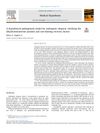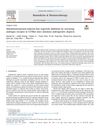The mechanism of androgenic alopecia Research/Science 10/2/2025
DHT may inhibit hair growth by affecting mitochondrial function, leading to hair follicle miniaturization. Treatments like minoxidil and PP405 may promote hair growth by altering metabolic pathways, potentially counteracting DHT's effects.
View this post in the Community →
Similar Community Posts Join
5 / 1000+ resultscommunity Creatine Doesn’t Cause Hair Loss: Stop the BS
Creatine does not cause hair loss, despite many users reporting personal experiences of hair shedding. Scientific evidence shows no link between creatine and increased hair loss or hormone changes.
community 6 months on dutast and minoxodil, hair growing like weeds now!
A woman experienced significant hair regrowth after six months of using dutasteride and minoxidil, despite initial hair loss due to androgenetic alopecia. She reported minimal side effects and highlighted the effectiveness of these treatments for women, despite doctors' hesitancy to prescribe them.
community My Theory Of Androgenic Alopecia
Hair loss is linked to cellular physiology and the IGF-1 to TGF-B1 ratio, not just androgen sensitivity. The theory lacks evidence, while finasteride and minoxidil are effective treatments.
community Confused why people are calling PP405 a cure...it never claimed to be able to undo miniaturization or revert vellus back to terminal hairs. It seems to be more of a growth stimulant like minoxidil.
PP405 is not a cure for hair loss but may reactivate dormant hair follicles, similar to minoxidil. It is unlikely to help with miniaturized or vellus hairs and is still in trial phases, with availability expected around 2030.
community How true is the statement: dead follicles don't grow back?
Hair follicles usually go dormant rather than die, and treatments like finasteride, minoxidil, and hormone therapy can sometimes reactivate them, though results vary. Complete regrowth is rare, especially in long-term bald areas, but some individuals see significant improvement with these treatments.
Related Research
6 / 1000+ results
research Recent Advances in Drug Development for Hair Loss
New treatments for hair loss show promise with advanced therapies and better targeting.
research CXXC5 Mediates DHT-Induced Androgenetic Alopecia via PGD2
Targeting CXXC5 and GSK-3β may help treat male pattern baldness.

research An Updated Etiology of Hair Loss and the New Cosmeceutical Paradigm in Therapy: Clearing the Big Eight Strikes
New treatments for hair loss should target eight main causes and use specific plant compounds and peptides for better results.

research A Hypothetical Pathogenesis Model for Androgenic Alopecia: Clarifying the Dihydrotestosterone Paradox and Rate-Limiting Recovery Factors
The model suggests that scalp tension could lead to hair loss, with factors like blood vessel hardening, enlarged oil glands, and poor microcirculation also playing a role. It also hints at a possible link between skull shape and baldness pattern.
research Natural Phenylethanoid Glycoside Forsythoside A Alleviates Androgenetic Alopecia by Selectively Inhibiting TRPV3 Channels in Mice
Forsythoside A may help treat hair loss by blocking specific channels.

research Dihydrotestosterone-Induced Hair Regrowth Inhibition by Activating Androgen Receptor in C57BL6 Mice Simulates Androgenetic Alopecia
DHT stops hair regrowth in mice, similar to human hair loss.